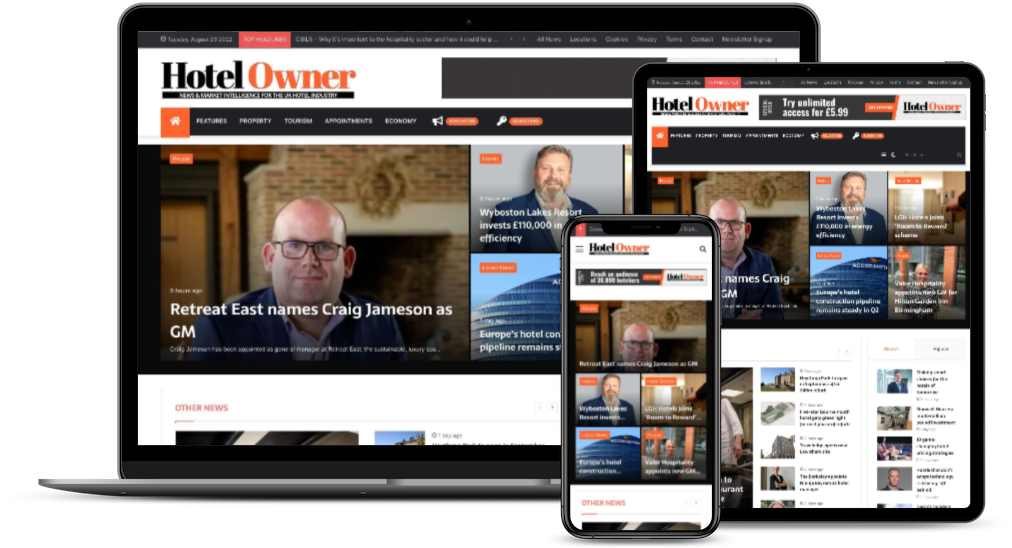
It was announced last April (2019) that the governor of the Bank of England, Mark Carney, would leave his post on 31 January 2020 after more than six years in the role. It was later confirmed that his departure would be delayed slightly in line with Brexit, and the search for his replacement, before Andrew Bailey, current head of the Financial Conduct Authority (FCA), was named as his successor just before Christmas.
Amidst all the changes, along with expert and not-so-expert economic analysis of the potential effects of Brexit, rumours and hints have started to abound, fuelled by statements from Mark Carney, that the Bank of England will at some point cut the Bank Rate to 0% in a bid to stimulate the economy.
The rumours have not been substantiated by the Bank of England nor have they been directly quoted by Mark Carney, however it is believed that sometime in the near future, interest rates could reach 0% or near 0%.
So why might interest rates be cut, and how can that benefit hotel businesses?
The Bank Rate, which is the single most important interest rate in the country, is used by the Bank of England as a way to manage inflation rates, economic growth and stimulate or curb spending. Although it is inherently complex, the general rule of thumb is that a low Bank Rate increases spending in the economy and drives economic growth, while high rates encourage savings and reduce spending in the economy.
The purpose of their manipulation is to maintain a steady rate of inflation (the rising price of goods) and ensure it stays below the government target of no more than 2%. In turn, banks respond to changes in the Bank Rate by aligning their own interest rates for saving and borrowing, however they are unlikely to exactly match the Bank Rate as they use interest rates to earn an income and cover any costs. Forgive me if I am teaching granny to suck eggs, but the theory is important before we consider the opportunities.
Many people consider interest rates in terms of savings and mortgages, earning them less on money in the bank, but costing them less on mortgage repayments. Business borrowing is the same, and regardless of whether the Bank Rate hits 0% or not, it is likely that the rate for borrowing will remain very low for months or even years to come.
In fact, in the most recent review by the Monetary Policy Committee (MPC) who is responsible for setting the Bank Rate, it is expected that several committee members will vote for its reduction before the end of January 2020.
Many businesses do take advantage of lower interest rates to support borrowing and investment decisions, however right now we are in a very unique period when a struggling economy and low interest rates are coinciding perfectly with high inbound tourism and high domestic tourism. More people are travelling to the UK and within the UK and these numbers are only growing.
On 21 January 2020, VisitBritain / VisitEngland launched their annual review and set out their five-year strategy, highlighting that visitors spent an extra £951m in Britain in the last financial year. They also set out an ambitious, but achievable target to grow inbound visitor numbers to 49m per year with a value of £35bn by 2025.
Despite the low cost of borrowing, which has been low and stayed low for many years, it seems that there is an overall reluctance to borrow or invest in improvements, across the sector.
This has likely been fuelled in the near term by uncertainty around Brexit and elections, but also overall financial and sector performance in the mid- to long-term, which have created low commercial confidence. I recognise that businesses have to manage risk and make considered decisions, but in my opinion, the attitude has been low risk for too long.
Considering our own inspections of hundreds of properties every year, there are two key statistics that stick out for me. First, that on average properties lost 5% from their score compared with two years ago, directly related to the quality and state of repair of furnishings. While this does not always result in a change to their star grade, it nevertheless highlights a slow but steady slippage in investment in properties, which over time will downgrade client experience.
Second, that on average refurbishment rotations have been increased by between 18 and 36 months, as hotels seek to reduce investments over time. I empathise, I really do, but ultimately we are in a period of quite cutthroat competition for quality offerings, driven by changes in the marketplace and the need to compete with market disruptors and new providers.
Investment and facilities are how hotels set themselves apart and help contribute to increased guest value. What worries me even more is that as investment slows, both the overall cost of investment goes up in order to bring facilities back up to standard, and of course the longer the cycle, the more businesses risk being left behind.
Think back to a stay five years ago and then think of a stay recently and what’s expected by guests is worlds apart. We like to believe that investment does happen to keep up with client expectations, but in reality, we regularly mystery shop properties that are missing many of the basics.
Ultimately, in my opinion, hotels and businesses are in the best position in a long time to make investments. I am keen to see businesses doing so and am looking forward to seeing the results. What are you planning to change to make your sure business is great in 2020?
By Deborah Heather, director of Quality in Tourism. The group assesses thousands of accommodation providers globally each year.









